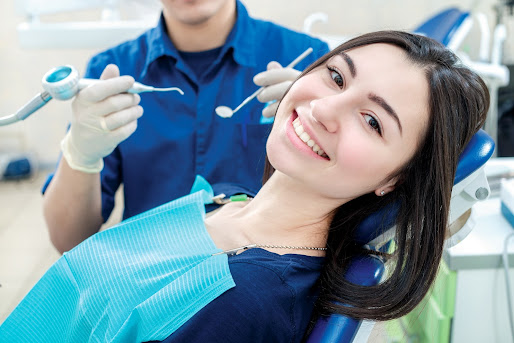
Having a straight smile is not only aesthetically pleasing but can also improve your oral health and overall confidence. If you're considering orthodontic treatment, you may be wondering whether traditional braces or Invisalign is the right choice for you. In this blog post, we'll explore the key differences, benefits, and considerations of both options to help you make an informed decision with the guidance of your trusted affordable dentist west Auckland has to offer.
The Basics: Braces and Invisalign
Braces have been the go-to orthodontic treatment for years. They consist of metal brackets that are bonded to your teeth and connected with wires, which gradually move your teeth into the desired position. Invisalign, on the other hand, is a newer alternative that uses clear, removable aligners made of plastic to straighten your teeth. Both treatments can effectively address various orthodontic issues, but they have distinct differences.
Treatment Duration: What to Expect
The duration of orthodontic treatment can vary based on the complexity of your case and the treatment option you choose. Generally, braces require a longer treatment period compared to Invisalign. While braces typically take an average of 18 to 24 months, Invisalign treatment can range from 6 to 18 months. However, it's important to remember that each case is unique, and the treatment duration will ultimately be determined by your dentist west Auckland assessment.
Visibility: Aesthetic Considerations
One of the primary concerns for many individuals seeking orthodontic treatment is the visibility of the appliances. Traditional braces are highly visible, as the metal brackets and wires are attached to the front of your teeth. In contrast, Invisalign aligners are virtually invisible, offering a more discreet treatment option. The clear aligners can be removed for special occasions, making them a popular choice for individuals who value aesthetics.
Comfort and Maintenance: Day-to-Day Experience
When it comes to comfort, Invisalign aligners have an edge over traditional braces. The smooth plastic material of the aligners reduces the likelihood of discomfort and mouth sores often associated with brackets and wires. Additionally, being removable, you can eat and drink comfortably without any restrictions. However, it's crucial to wear the aligners for the recommended 20 to 22 hours a day for optimal results.
Traditional braces may initially cause mild discomfort as your mouth adjusts to the appliances. However, advancements in technology have made modern braces more comfortable than ever before. Adjustments are typically needed every few weeks, and specific food restrictions apply to protect the brackets and wires from damage.
Maintenance is also an important factor to consider. With braces, extra care is required to clean around the brackets and wires effectively. Special tools, such as floss threaders and interdental brushes, may be necessary. In contrast, maintaining good oral hygiene with Invisalign aligners is relatively simple. They can be removed when brushing and flossing, allowing for a more thorough clean.
Treatment Flexibility: Lifestyle Considerations
The flexibility of treatment is another aspect to ponder when deciding between braces and Invisalign. Braces are fixed appliances that remain attached to your teeth throughout the treatment process. While this ensures constant tooth movement, it also means you must adhere to certain dietary restrictions and be mindful of potential damage to the appliances.
Invisalign aligners provide greater flexibility as they can be removed when necessary. This means you can enjoy all your favourite foods without any restrictions. It also allows for easy cleaning, maintaining oral health, and reducing the chances of plaque buildup. However, it's important to note that aligners must be worn consistently for the recommended hours to achieve optimal results.
Complexity of Treatment: Case-specific considerations
The complexity of your orthodontic case can also influence the treatment option that is most suitable for you. Traditional braces are known for their versatility and ability to address a wide range of orthodontic issues, including severe crowding and misalignment.
Invisalign aligners have made significant advancements over the years, and they can also treat mild to moderate orthodontic problems. However, more complex cases may still require the use of traditional braces for optimal results. Your dentist west Auckland will evaluate your specific needs and discuss the most appropriate treatment option for your unique case.
Cost Considerations: Aligning Your Budget
Cost is an important factor to consider when deciding on orthodontic treatment. Traditional braces typically have a lower upfront cost compared to Invisalign. However, it's crucial to consider all aspects of the treatment, including visits, adjustments, and maintenance. Moreover, dental insurance may cover a portion of the treatment, making it more affordable. Speak with your dentist to understand the financial implications of both options and explore potential financing options if necessary.
Conclusion
In the end, whether you choose braces or Invisalign depends on your unique needs and preferences. Braces offer precise control, making them ideal for complex cases, while Invisalign offers discretion and convenience. Consult with your dentist west Auckland to determine the best option for your smile goals and lifestyle. Whichever path you choose, both treatments can lead to a healthier, more confident you!
Source: Braces Vs. Invisalign: Which Orthodontic Treatment Is Right for You?



























